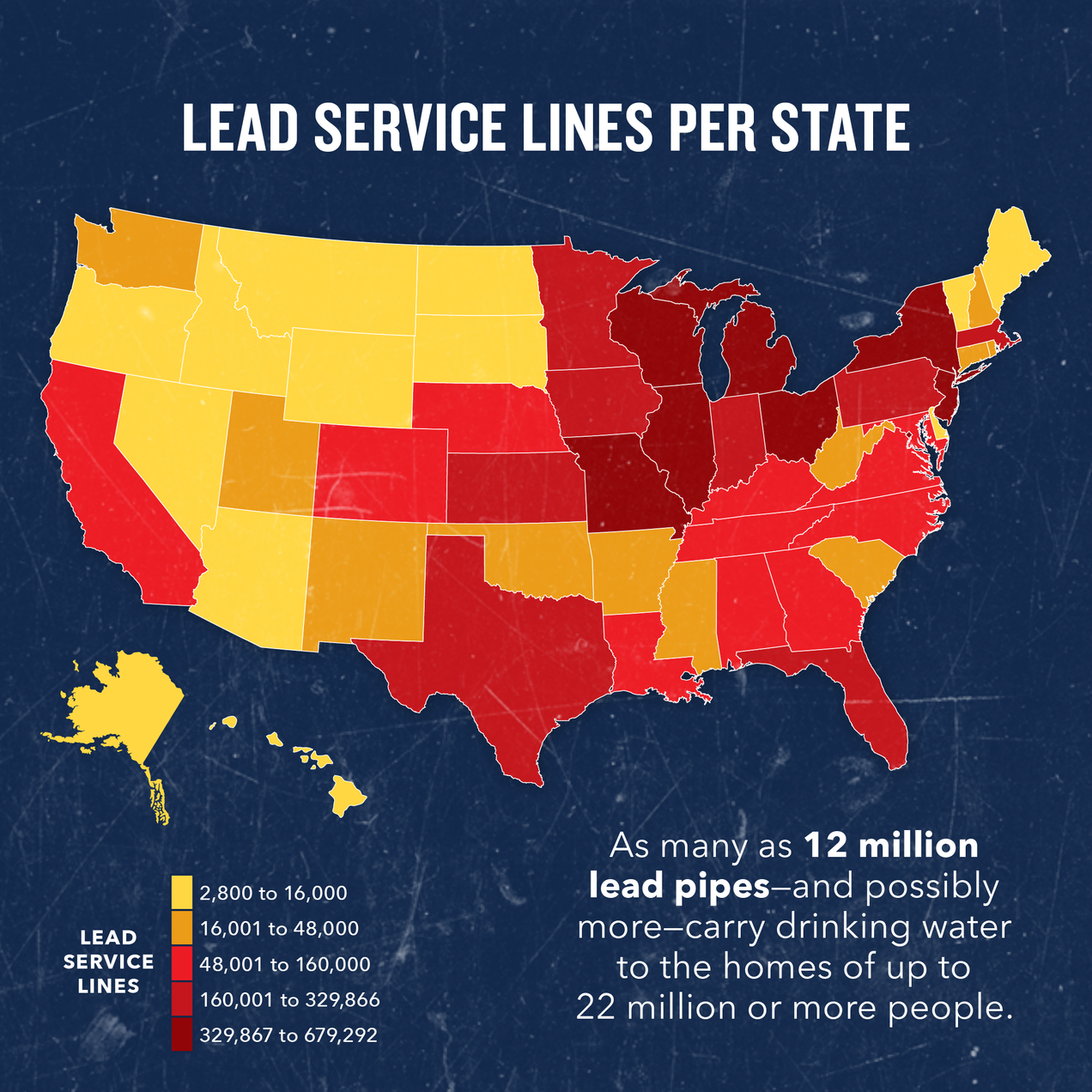How to Test and Detect for Heavy Metals in Drinking Water
In major cities such as Chicago, Baltimore, New York, Pittsburgh, Detroit, Milwaukee and others, lead contamination in drinking water has been a lingering issue. In Chicago specifically, the city formed a tentative plan to remove all lead water lines. However, as of September 2021, only three out of more than 400,000 lead water lines had been replaced. The following article discusses how heavy metals contaminate drinking sources and how Indoor Science can test your water quality and recommend corrective actions.
Health Risks of Heavy Metal Exposure
Exposure to heavy metals through drinking water has been linked to several different adverse health effects. Consuming heavy metals can cause damage to metabolisms, cardiovascular disorders, neuronal damage, renal injuries, and an increased risk of cancer and diabetes. [1] Heavy metal exposure can especially harm and affect more vulnerable groups of people including those who are immunocompromised, pregnant women and children. Testing and monitoring potable drinking water in residential and commercial settings may prevent harmful exposure to building occupants.

How Heavy Metals Contaminate Drinking Water Sources
Drinking water can become contaminated by heavy metals in several different ways. Heavy metals can be present within groundwater, surface water, runoff water, and various other sources which can contribute to drinking water contamination. Additionally, the material used for plumbing purposes and the condition of the service water lines can also promote exposure of heavy metals through drinking water. If pipes are in poor condition and starting to corrode, the changes of heavy metal exposure increases.
Potential Heavy Metal Contaminants in Drinking Water
Antimony, arsenic, beryllium, cadmium, chromium, copper, lead, mercury, nickel, selenium, silver, thallium, and zinc are environmental metals that may be found in drinking water. The Environmental Protection Agency (EPA) has established standards that dictate the maximum contaminant level (MCL) that each element cannot exceed in drinking water.
Testing Methodologies
Heavy metals in drinking water can be lab tested using EPA Method 200.7 or EPA Method 200.8. EPA Method 200.7 involves inductively coupled plasma-atomic emission spectrometry while EPA Method 200.8 is more precise and utilizes inductively coupled plasma-mass spectrometry. Indoor Science prefers testing method 200.8 for potable water due to its lower detection limit. This is especially important in settings where children are present like daycares since children are considered to be more vulnerable to heavy metal exposure.
To learn more about how Indoor Science can conduct water testing for your business or residence contact them today.
[1] Rehman K, Fatima F, Waheed I, Akash MSH. Prevalence of exposure of heavy metals and their impact on health consequences. J Cell Biochem. 2018 Jan;119(1):157-184. doi: 10.1002/jcb.26234. Epub 2017 Aug 2. PMID: 28643849.
 877-872-4339
877-872-4339  Contact Us
Contact Us 






